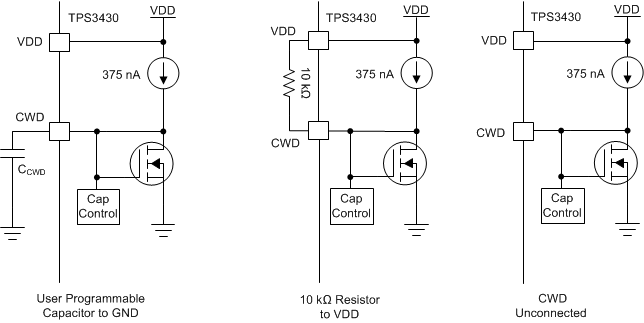ZHCSIK0A July 2018 – October 2021 TPS3430
PRODUCTION DATA
- 1 特性
- 2 应用
- 3 说明
- 4 Revision History
- 5 Pin Configuration and Functions
- 6 Specifications
- 7 Detailed Description
- 8 Application and Implementation
- 9 Power Supply Recommendations
- 10Layout
- 11Device and Documentation Support
- 12Mechanical, Packaging, and Orderable Information
8.1.2 CWD Functionality
The TPS3430 features three options for setting the watchdog window: connecting a capacitor to the CWD pin, connecting a pull-up resistor to VDD, and leaving the CWD pin unconnected. Figure 8-2 shows a schematic drawing of all three options. If this pin is connected to VDD through a 10-kΩ pull-up resistor or left unconnected (high impedance), then the factory-programmed watchdog timeouts are enabled; see the Section 6.6 table. Otherwise, the watchdog timeout can be adjusted by placing a capacitor from the CWD pin to ground.
 Figure 8-2 CWD Charging Circuit
Figure 8-2 CWD Charging Circuit